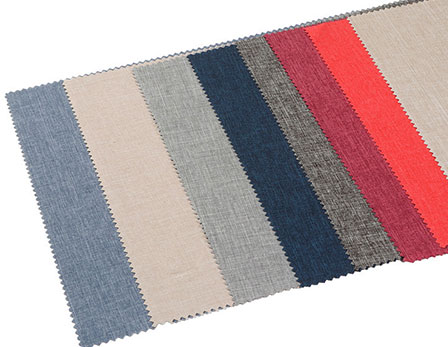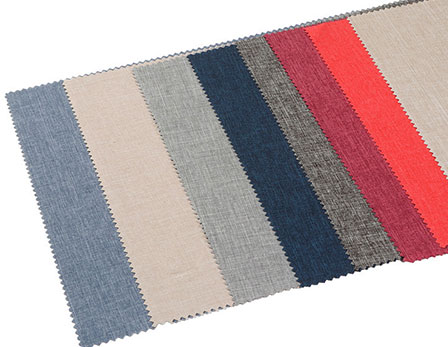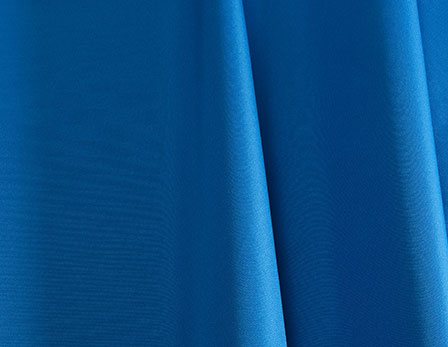

Functional and technical textiles play an essential role in our everyday lives, providing us with comfort, protection, and functionality. These textiles are designed to have specific properties that make them suitable for various applications such as healthcare, sports, automotive, and aerospace industries. Understanding the definition, importance, and evolution of functional and technical textiles will give us insights into their significance in today's world.
Functional textiles are fabrics with additional properties that go beyond their aesthetic appeal, providing specific functions such as moisture management, UV protection, antibacterial properties, or fire resistance. On the other hand, technical textiles are textiles that are designed for non-aesthetic purposes, addressing specific end-use requirements and applications.
The importance of functional and technical textiles lies in their ability to enhance performance, comfort, safety, and durability in various industries. For example, medical textiles are crucial in the healthcare sector, providing wound dressings, surgical gowns, and implants that promote healing and infection control. In the automotive industry, textile composites offer lightweight and strong materials for car interiors and exteriors, contributing to fuel efficiency and safety.
The evolution of functional and technical textiles can be traced back to ancient times when natural materials like animal skins and plants were used for their functional properties. Over the years, advancements in technology and innovation have led to the development of synthetic fibers and engineered textiles with enhanced functionalities.
Today, we have a wide range of functional and technical textiles, including smart textiles that can sense and respond to external stimuli such as temperature or pressure. These textiles incorporate sensors, actuators, and other electronic components, opening up new possibilities for applications such as wearable technology and medical monitoring devices.
In conclusion, functional and technical textiles have significantly impacted various industries by providing enhanced functionality, performance, and safety. The evolution of these textiles continues to drive innovation, as new materials and technologies are developed to meet the ever-changing needs of society. As we witness the continued growth and advancements in this field, it is evident that functional and technical textiles will continue to play a crucial role in our lives.
The apparel industry has greatly benefited from the use of functional and technical textiles, especially in the development of moisture management fabrics. These fabrics are designed to wick away moisture from the body, keeping the wearer dry and comfortable. They are commonly used in sportswear and activewear, where moisture buildup can cause discomfort and hinder performance. Moisture management fabrics help to regulate body temperature and prevent the growth of odor-causing bacteria, making them ideal for intense physical activities.
Another important application of functional and technical textiles in the apparel industry is the production of protective fabrics. These fabrics are specifically designed to provide safety and protection against various hazards. They are commonly used in industries such as construction, firefighting, and military, where workers are exposed to potentially dangerous conditions.
Protective fabrics can offer features such as flame resistance, thermal insulation, chemical resistance, and puncture resistance. They help to protect the wearer from heat, fire, chemicals, and sharp objects, reducing the risk of injuries. In addition to industrial applications, protective fabrics are also used in specialized clothing for activities like motorcycling and extreme sports.
In conclusion, functional and technical textiles have found valuable applications in the apparel industry. Moisture management fabrics enhance comfort and performance in sportswear, while protective fabrics provide safety and protection in various hazardous environments. As technology continues to advance, we can expect further innovation and improvement in these textiles, opening up new possibilities for the apparel industry.

Functional and technical textiles have made significant contributions to the healthcare industry, particularly in the development of antibacterial and antimicrobial textiles. These textiles are designed to inhibit the growth and spread of bacteria and other microorganisms, making them essential in healthcare facilities where maintaining cleanliness and hygiene is crucial.
Antibacterial and antimicrobial textiles help to reduce the risk of infections and the spread of diseases. They are commonly used in hospital gowns, bed linens, surgical drapes, and uniforms to ensure a safe and hygienic environment for patients and healthcare professionals. These textiles can be treated with special coatings or infused with antimicrobial agents, such as silver nanoparticles, to provide long-lasting protection against harmful pathogens.
Another important application of functional and technical textiles in the healthcare industry is the use of compression textiles. These textiles apply controlled pressure to specific areas of the body, improving blood circulation and facilitating the healing process. Compression garments are commonly used in the treatment of conditions such as deep vein thrombosis, lymphedema, and venous ulcers.
Compression textiles help to reduce swelling, enhance tissue oxygenation, and provide support to muscles and joints. They can be found in the form of compression stockings, sleeves, and bandages. These textiles are designed to provide the right amount of pressure at specific anatomical regions, ensuring optimal therapeutic benefits.
In conclusion, functional and technical textiles have brought significant advancements to the healthcare industry. Antibacterial and antimicrobial textiles help to maintain cleanliness and prevent infections in healthcare settings, while compression textiles provide therapeutic benefits for various medical conditions. As technology continues to advance, we can expect further innovation and refinement in these textiles, thereby improving patient care and outcomes.
Functional and technical textiles have also made a significant impact in the sports industry. Sports performance fabrics are designed to enhance the performance and comfort of athletes during physical activities. These textiles are engineered to be lightweight, breathable, moisture-wicking, and stretchable, allowing athletes to move freely and stay dry during intense workouts or competitions.
Sports performance fabrics are commonly used in the manufacturing of athletic apparel such as workout clothes, sportswear, and activewear. These textiles offer features like quick-drying abilities, UV protection, and odor control, providing athletes with maximum comfort and functionality.
Thermoregulating textiles are another important application of functional and technical textiles in the sports industry. These textiles can adapt to the body's temperature changes, helping athletes to maintain optimal body temperature during physical activities. They provide insulation when it's cold and allow heat to escape when it's hot, preventing overheating or excessive sweating.
Thermoregulating textiles are commonly used in sportswear like base layers, jackets, and socks. They enhance performance and comfort by keeping the body at an optimal temperature, reducing the risk of overheating, and improving overall endurance.
In conclusion, functional and technical textiles have revolutionized the sports industry by providing specialized textiles that optimize athletes' performance and comfort. Sports performance fabrics enhance athletes' mobility and moisture management, while thermoregulating textiles help maintain optimal body temperature. As technology continues to advance, we can expect further advancements in these textiles, leading to improved athletic performance and overall sports experience.

Fire-resistant textiles play a crucial role in the automotive industry, particularly in vehicles like racing cars and fire trucks. These textiles are designed to withstand high temperatures and offer protection against flames and heat, ensuring the safety of both the driver and passengers in case of a fire accident.
Fire-resistant textiles are commonly used in the manufacturing of seat covers, upholstery, and protective gear. These textiles are made from flame-resistant materials and feature special coatings or treatments that offer added fire protection. They are also lightweight and comfortable, allowing for easy movement and reducing constraints on the driver.
Noise and vibration reduction textiles are essential in creating a comfortable and quiet driving experience. These textiles are designed to absorb and dampen noise and vibrations generated by the engine, road, and other external factors, ensuring a smoother and more enjoyable ride.
These textiles are used in various parts of a vehicle, including carpets, headliners, and door panels. They are engineered to have excellent sound-absorbing properties, reducing the level of noise and preventing it from entering the cabin. Additionally, they help minimize vibrations, enhancing overall comfort and reducing driver and passenger fatigue.
In the automotive industry, functional and technical textiles have become integral, offering safety, comfort, and functionality. From fire-resistant textiles that protect against flames to noise and vibration reduction textiles that enhance the driving experience, these specialized textiles contribute to the overall performance and satisfaction of vehicle owners.
With ongoing advancements in technology, it is expected that functional and technical textiles will continue to evolve, leading to further improvements in automotive safety and comfort.
Fabric Sourcing 101: How to Source Fabrics for your Clothing Line
2024-03-13
Discover essential tips for sourcing fabrics for your clothing line. Learn how to find reliable fabric suppliers, evaluate fabric quality, negotiate prices, and understand minimum order quantities. Ensure your garments meet quality standards and stand out in the market.
Everything You Need To Know About The Most Popular Fabrics
2024-03-06
Discover the characteristics, advantages, and disadvantages of popular fabrics including cotton, polyester, silk, and wool. Learn how to choose the right fabric for your projects and explore their unique properties in detail.
Clothing fabrics for sensitive skin, according to textile experts
2024-02-26
Discover the best clothing fabrics for sensitive skin recommended by textile experts. Learn about hypoallergenic options like cotton, bamboo, silk, and modal, and make informed choices for comfortable wear.
Best clothing fabric for sensitive skin
2024-02-20
Discover the best clothing fabrics for sensitive skin, including cotton, bamboo, silk, and hemp. Learn about their benefits and properties to ensure comfort and well-being.